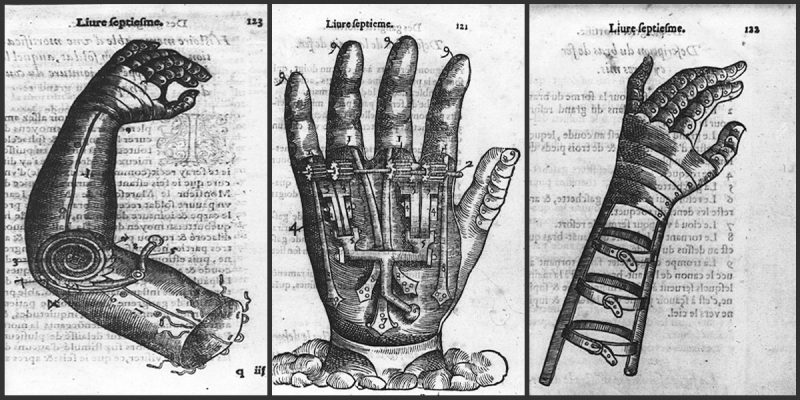Ambroise Paré was the official royal surgeon for kings Henry II, Francis II, Charles IX and Henry III and is considered to be one of the fathers of surgery and modern forensic pathology. He contributed both to the practice of surgical amputation and to the design of limb prostheses. He also invented some ocular prostheses, making artificial eyes from enameled gold, silver, porcelain and glass. He was one of the most notable surgeons of the European Renaissance, regarded by some medical historians as the father of modern surgery.

About 1533 Paré went to Paris, where he soon became a barber-surgeon apprentice at the Hôtel-Dieu. He was taught anatomy and surgery and in 1537 was employed as an army surgeon. By 1552 he had gained such popularity that he became surgeon to the king; he served four French monarchs: Henry II, Francis II, Charles IX, and Henry III.
Paré joined the army in 1536 and spent much of the next 30 years as a military surgeon. He improved or invented many techniques, especially in the treatment of war wounds.

Paré first experienced being a battle medic at Piedmont, during the campaign of Francis I. When, one day, he was presented with more gunshot wounds than he had oil for, he improvised and used an old Roman technique, using oil of roses, egg white, and turpentine. He worried through the night that the soldiers would die, but to his surprise, he found the next morning that the soldiers treated with oil were in agony, their wounds swollen and some had even died during the night, whereas the men treated the Roman way were well rested, their wounds calm and beginning to heal. He then continued with this approach to sealing wounds, rather than the largely accepted method of cauterizing wounds. His new technique was not perfect, as there was still a chance of infection and the pain was still a problem, but both of these were a much smaller problem than when using boiling oil.

As a military surgeon, Paré had removed many a soldier’s shattered arm or leg, and he eventually began designing and building artificial limbs to help the men who had been maimed.
He drew up preliminary sketches of an arm that could be bent with a pulley that mimicked arm muscles. His mechanical hand was operated by catches and springs, was worn by a French Army captain in battle. Subsequent refinements in medicine, surgery, and prosthetic science greatly improved amputation surgery and the function of prostheses. When he designed legs, he gave them a mechanical knee that could be locked when standing and bent at will.



Paré was also an important figure in the progress of obstetrics in the middle of the 16th century. He revived the practice of podalic version and showed how even in cases of head presentation, surgeons with this operation could often deliver the infant safely, instead of having to dismember the infant and extract the infant piece by piece.
Unlike many surgeons of his time, Paré resorted to surgery only when he found it absolutely necessary. He was one of the first surgeons to discard the practice of castrating patients who required surgery for a hernia. He introduced the implantation of teeth, artificial limbs, and artificial eyes made of gold and silver.

His writings further include the results of his methodical studies on the effects of violent death on internal organs. He also created and wrote, Reports in Court, a procedure on the writing of legal reports in relation to medicine. His writings and instructions are known to be the beginning of modern forensic pathology.
Photos: National Library of Medicine
